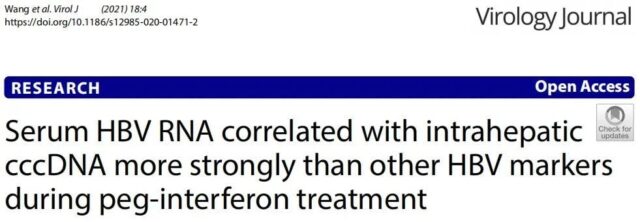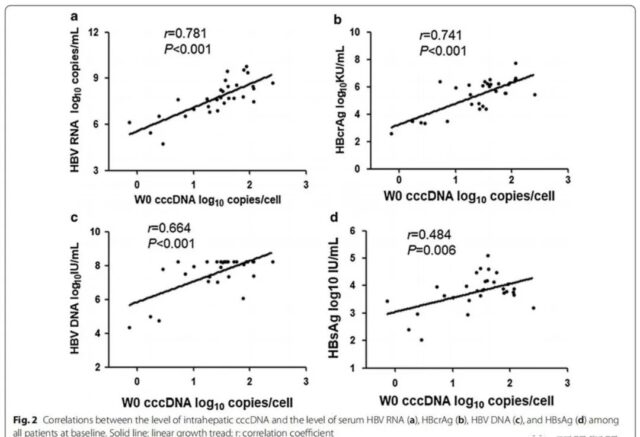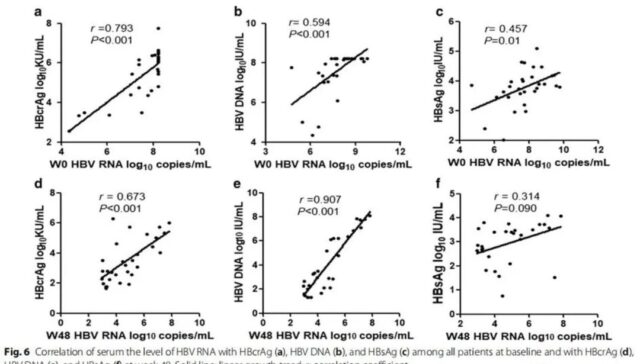Hepatitis B: Treated by HBV RNA and peginterferon-α
- Mifepristone: A Safe and Effective Abortion Option Amidst Controversy
- Asbestos Detected in Buildings Damaged in Ukraine: Analyzed by Japanese Company
- New Ocrevus Subcutaneous Injection Therapy Shows Promising Results in Multiple Sclerosis Treatmen
- Dutch Man Infected with COVID-19 for 613 Days Dies: Accumulating Over 50 Virus Mutations
- Engineered Soybeans with Pig Protein: A Promising Alternative or Pandora’s Dish?
- Severe Fever with Thrombocytopenia Syndrome (SFTS): A Tick-Borne Threat with High Mortality
Hepatitis B: Treated by HBV RNA and peginterferon-α
- Red Yeast Rice Scare Grips Japan: Over 114 Hospitalized and 5 Deaths
- Long COVID Brain Fog: Blood-Brain Barrier Damage and Persistent Inflammation
- FDA has mandated a top-level black box warning for all marketed CAR-T therapies
- Can people with high blood pressure eat peanuts?
- What is the difference between dopamine and dobutamine?
- What is the difference between Atorvastatin and Rosuvastatin?
- How long can the patient live after heart stent surgery?
Hepatitis B: Treated by HBV RNA and peginterferon-α. HBV RNA and peginterferon-α treatment: cccDNA in the liver of patients with chronic hepatitis B is significantly correlated.
Previous studies have reported that HBV RNA and HBcrAg can be used as potential biomarkers for antiviral therapy in patients with chronic hepatitis B, and studies have reported the correlation between HBV RNA and cccDNA before and after nucleoside treatment.
Previous studies have reported that HBV RNA and HBcrAg can be used as potential biomarkers for antiviral therapy in patients with chronic hepatitis B, and studies have reported the correlation between HBV RNA and cccDNA before and after nucleoside treatment.
However, the correlation between HBV RNA and cccDNA before and after PEG IFNα treatment has not been concluded.
Recently, a Chinese medical team found that HBV RNA was significantly correlated with intrahepatic cccDNA before and after 48 weeks of PEG IFNα treatment.
HBV RNA can be used as a good surrogate index for PEG IFNα treatment of HBeAg-positive chronic hepatitis B patients to reflect intrahepatic cccDNA.

Research method
The serum HBV RNA, HBcrAg, HBV DNA and HBsAg of 30 HBeAg-positive chronic hepatitis B patients who received 48 weeks of PEG IFNα treatment were evaluated longitudinally.
In addition, intrahepatic cccDNA was detected at baseline and at 48 weeks of PEG IFNα treatment.
Statistical analysis was performed on the individual correlation among HBV RNA, HBcrAg, HBV DNA, HBsAg and cccDNA.
Patient baseline
The study cohort included 30 patients (18 males and 12 females). The average age is 26.5 years.
For further comparison, after 48 weeks of PEG IFNα treatment, patients were divided into two groups: SR group (patients who obtained HBeAg seroconversion) and NSR group (patients who did not obtain HBeAg seroconversion).
The baseline between the SR group and the NSR group was not significantly different (all P> 0.05).
Research results:
01 After 48 weeks of PEG IFNα treatment, the levels of HBV RNA, HBV DNA and intrahepatic cccDNA decreased rapidly
The serum HBV RNA, HBV DNA and intrahepatic cccDNA levels of all patients decreased rapidly from baseline to 48 weeks of treatment (HBV RNA decreased from 7.73 log10 copies/mL to 4.66 log10 copies/mL; HBV DNA decreased from 7.57 log10 IU/mL to 4.22 log10 IU/mL; cccDNA dropped from a median of 33.8 copies/cell to 2.53 copies/cell).
The HBV RNA level of SR group decreased faster than that of NSR group. After 48 weeks of PEG IFNα treatment, the serum HBV RNA level in the SR group was significantly lower than that in the NSR group (3.56 log10 copies/mL vs. 5.00 log10 copies/mL, P = 0.002).
The decline of serum HBV RNA in SR group was slower than the decline in serum HBV DNA level, while the decline trend of HBV RNA and HBV DNA in NSR group was similar.
There was no significant difference in the cccDNA decline trend between the SR and NSR groups (during 48 weeks of PEG IFNα treatment, the cccDNA level in the SR group decreased from a median of 30.2 copies/cell to 1.94 copies/cell, and the NSR group decreased from a median of 34.4 copies/cell. 3.23 copies/cell).

02 HBV RNA was significantly correlated with cccDNA before and after 48 weeks of PEG IFNα treatment
The correlation between baseline HBV RNA and cccDNA was better than HBcrAg, HBV DNA and HBsAg (r = 0.781, P <0.001; r = 0.741, P <0.001; r = 0.664, P <0.001 and r = 0.484, P = 0.005 ).

After 48 weeks of PEG IFNα treatment, HBV RNA, HBV DNA and HBcrAg were significantly correlated with intrahepatic cccDNA (r = 0.728, P <0.001; r = 0.721, P <0.001; r = 0.655, P <0.001).

The baseline HBV RNA level was strongly correlated with HBcrAg and HBV DNA (r = 0.793, P <0.001; r = 0.594, P <0.001, respectively). After 48 weeks of PEG IFNα treatment, HBV RNA was still positively correlated with HBcrAg and HBV DNA (r = 0.673, P <0.001; r = 0.907, P <0.001). At baseline and at 48 weeks of treatment, HBV RNA was moderately correlated with HBsAg (r = 0.457, P = 0.010; r = 0.314, P = 0.090, respectively).

Expert comments:
The study showed that the levels of HBV RNA, HBV DNA and cccDNA in chronic hepatitis B patients treated with PEG IFNα decreased rapidly and significantly.
Before and after treatment, the correlation between HBV RNA and cccDNA was significantly stronger than that of HBsAg.
It may be that HBsAg is produced not only from cccDNA, but also from integrated HBV DNA. Therefore, patients with HBsAg clearance may reflect the decrease of cccDNA and integrated HBV DNA.
It is concluded from this study that in patients who have achieved HBsAg clearance based on PEG IFNα therapy, HBV RNA may be used as a surrogate biomarker for cccDNA in patients with chronic hepatitis B and predict the further outcome of patients with chronic hepatitis B.
Hepatitis B: Treated by HBV RNA and peginterferon-α
(source:internet, reference only)
Disclaimer of medicaltrend.org



